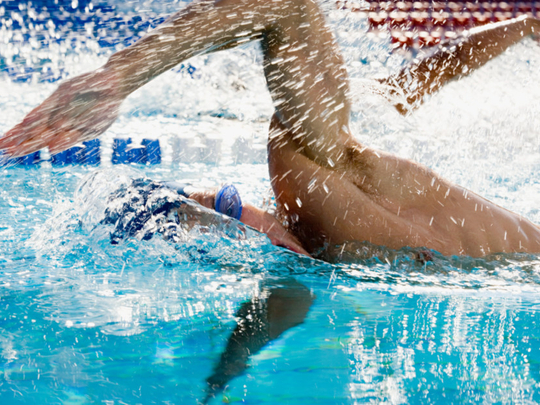
Swimming
Why it’s great: Swimming is a great form of cardiovascular exercise that has little joint impact, unlike most other forms of exercise, as it is non-weight-bearing. Apart from the obvious improved fitness levels, swimming can also improve your heart strength dramatically, with the added benefit of a reduced resting heart rate. You can match the number of pool lengths against time taken as a gauge of your workout performance.
Who it’s for: All age groups, old or young. Even if you are unfit right now, swimming is one of the best ways to build a foundation of cardiovascular fitness. Swimming is also good for people who are asthmatic, as it can help improve their lung function and breathing techniques.
The test: Measure your resting heart rate before you begin your exercise regime. Swim 30 minutes consistently three times per week. After six weeks of regular swimming, check you resting heart rate again and see how much it drops — a sign that your heart has become stronger.
Cycling
Why it’s great: Cycling is excellent for maintain or improve good heart health. It also has other added benefits of increasing your leg strength and endurance. Take the family out onto the many cycle tracks and get the whole family fit.
Who it’s for: Recommended for all age groups. It is very simple and requires very little planning. You can even rent bicycles around the larger emirates, including at some parks in Dubai, so there really is no excuse.
The test: A great way to measure your workouts is with mobile apps that use GPS to track your route and record stats such as distance, speed, time, etc. Every time you go out for a ride, try and add another kilometre. Over time you will see a big improvement in your fitness level and heart health.
Running
Why it’s great: Running regularly not only builds strong bones and helps to maintain a healthy weight but also improves your cardiovascular fitness.
Who it’s for: Not for everybody; it has it’s limitations. If you are overweight or obese, I would recommend you walk at a moderate pace. This will reduce the impact on your joints.
The test: You can use the Rate of Perceived Exertion (RPE) test to measure how well you’re doing. It’s on a scale of 1 to 10, 1 being very easy with no effort needed, to 10, which sees you struggle at max effort.
Squash
Why it’s great: Squash is a fast-paced form of cardiovascular exercise that challenges the heart to keep up. As the game can be so unpredictable, you are forced to react quickly and perform a lot of short sprints in order to keep the game alive.
Who it’s for: Good for teenagers all the way through to older adults around the age of 50. Be aware of the risks squash can place on your body due to sudden changes in direction, especially on the knees. Make sure you warm up well and that your joints are thoroughly stretched and mobilised before you start.
The test: Wear a heart rate monitor and periodically check your peak heart rate. As you get fitter, you will also see your recovery time decrease as your heart rate returns to normal quicker. This is a sign that your heart is coping better at adapting to quick changes in workout intensity.
Volleyball
Why it’s great: Volleyball — particularly beach volleyball — is highly effective at improving your heart function and strength. Having to run on the sand makes it much more intense, therefore requiring the heart to work a little harder.
Who it’s for: Most people with an average fitness level can play volleyball. It is a great way to get outside and exercise.
The test: Look for changes in your breathing pattern during the game. Playing on sand can quickly take the breath out of you, so focusing on your breathing will help keep the heart rate under control — holding your breath for sustained periods will not only raise your heart rate but can also elevate your blood pressure, which is not good.
— The writer is a Personal Trainer and Fitness Manager at Fitness First Motor City, Dubai












